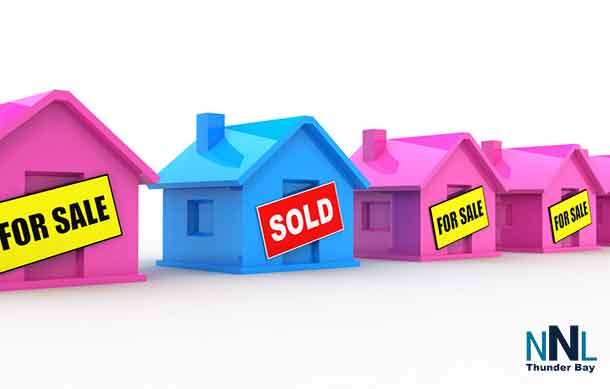 TORONTO – REAL ESTATE – The Royal LePage House Price Survey released today showed double-digit growth in the prices of homes across the Greater Toronto Area (GTA). In the first quarter of 2017, the aggregate2price of a home in the region rose by an astounding 20.0 per cent year-over-year to $759,241.
TORONTO – REAL ESTATE – The Royal LePage House Price Survey released today showed double-digit growth in the prices of homes across the Greater Toronto Area (GTA). In the first quarter of 2017, the aggregate2price of a home in the region rose by an astounding 20.0 per cent year-over-year to $759,241.
When broken down by housing type, in the first quarter of 2017, the median price of a two-storey home and bungalow in the GTA climbed 21.9 per cent and 19.3 per cent year-over-year to $894,919 and $752,114, respectively. Condominiums within the region also witnessed significant price appreciation, increasing by 11.0 per cent to $408,909 over the same period.
During the quarter, the strongest growth came from the suburban areas outside of the downtown core, as buyers continued to push outwards in order to find affordability, placing significant strain on supply within many regions across the GTA. As a result, each city found in the regional composite appreciated by at least 17.0 per cent on an annual basis, with Richmond Hill and Oshawa significantly outpacing the rest, surging by 31.5 per cent and 28.2 per cent when compared to the same period last year, respectively.
“With prices coming back to earth in the Lower Mainland of British Columbia, the Greater Toronto Area has claimed the title of Canada’s hottest housing market this quarter,” said Dianne Usher, senior vice president, Johnston and Daniel, a division of Royal LePage. “A serious lack of inventory due in part to rezoning processes that don’t permit intensification in many populous areas within the region, coupled with incredible demand fueled by a strong economy, immigration, high household formation and continued low interest rates, has driven the market into a frenzy, causing ultra-hot home price appreciation.”
Recently, in an effort to shield themselves from the GTA’s highly competitive market, many homebuyers have begun to venture well outside of the municipality’s borders in search of property, causing all regions studied within a two-hour drive radius of the province’s capital to experience double-digit price growth in the first quarter of 2017.
“As affordability across the GTA continues to erode, many homebuyers have increasingly begun to search for property elsewhere in southern Ontario where market factors are more favourable,” Usher continued. “However, the fact remains that many of these regions are not built to support large volumes of demand, causing market conditions in these areas to quickly intensify.”
Greater Toronto Area Market Summaries
Toronto continued to witness double-digit growth in house prices in the first quarter of 2017, with the region’s aggregate price rising 17.0 per cent year-over-year to $763,875. A prolonged period of low interest rates and increased interest in this world-class, urbanized environment continued to attract prospective homebuyers to the region, creating a severe shortage in inventory and leading many to divert their attention to the condominium market for its relative affordability.
Scarborough remained one of the most affordable areas outside of the downtown core, with its aggregate price climbing 17.3 per cent year-over-year to $625,487 in the first quarter. Increased demand driven by the region’s affordability and close proximity to the GTA has created a situation where many homes for sale are bombarded by multiple offers.
York Region continued to see significant growth in the first quarter, with Richmond Hill experiencing the largest gains in appreciation in the country. During the first quarter, the aggregate price of a home in the area rose 31.5 per cent year-over-year to $1,209,741, as immigration and foreign investment continued to influence the market, resulting in a severe inventory shortage and steep price appreciation. Homes in Vaughan also appreciated significantly, experiencing the third highest appreciation nationally, with the aggregate price of a home increasing 25.8 per cent to $985,534.
International interest continued to drive prices higher in Markham, much like certain other regions of the GTA, with many choosing the area to take advantage of its top high schools and close proximity to the downtown core. Despite sellers beginning to decide to cash in on current rates of appreciation in the region, an extreme pre-existing lack of inventory has helped home values jump higher, with the aggregate house price rising 23.2 per cent year-over-year to $970,216.
Brampton continued to witness significant appreciation in the first quarter of 2017, with the aggregate price of a home climbing 19.7 per cent year-over-year to $633,580. Increased migration into the region from higher-priced areas in the GTA, including Richmond Hill, Vaughan, Mississauga and the City of Toronto has put an upward pressure on home prices within the market.
A remarkably low supply of listings in Mississauga contributed to rising home prices in the region in the first quarter. The aggregate price of a home within the region climbed 18.6 per cent year-over-year to $665,827, as migration from other parts of the GTA, as well as a lull in new home builds and continued interest from investors placed upward pressure on the market.
The aggregate price of a home in Milton climbed 18.0 per cent year-over-year to $680,237 in the first quarter. The region’s small town atmosphere continued to attract buyers spilling over from other higher-priced markets in the GTA, including millennials and investors looking to take advantage of inventory in and around the new Wilfrid Laurier University campus.
Historically low inventory levels across Oakville continued to drive prices higher in the first quarter of 2017, resulting in a significant year-over-year aggregate price increase of 23.1 per cent to $987,001. A higher representation of foreign buyers, paired with an influx of demand from other areas of the GTA have virtually cut inventory levels in half, giving way to the prominence of bidding wars within the region.
The Durham Region continued to attract prospective homeowners in the first quarter of 2017, largely because of its relative affordability. Oshawa saw one of the strongest rates of appreciation in the GTA, with the aggregate house price increasing by 28.2 per cent year-over-year to $500,105. Whitby also experienced strong gains in the first quarter, with the aggregate home price rising by 19.0 per cent year-over-year to $623,784. During the same period, Pickering and Ajax experienced noteworthy increases in aggregate house prices, increasing by 17.0 per cent and 22.7 per cent year-over-year to $655,797 and $640,041, respectively.
Regional Pricing Data
|
Two-Storeys |
Bungalows |
Condominiums |
Aggregate |
|||||||||
|
Market |
Q1 2016 |
Q1 2017 |
Year-Over-Year % Change |
Q1 2016 |
Q1 2017 |
Year-Over-Year % Change |
Q1 2016 |
Q1 2017 |
Year-Over-Year % Change |
Q1 2016 |
Q1 2017 |
Year-Over-Year % Change |
|
Greater Toronto Area |
$734,414 |
$894,919 |
21.9% |
$630,444 |
$752,114 |
19.3% |
$368,431 |
$408,909 |
11.0% |
$632,678 |
$759,241 |
20.0% |
|
Toronto |
$915,382 |
$1,097,015 |
19.8% |
$682,163 |
$807,552 |
18.4% |
$403,039 |
$444,809 |
10.4% |
$652,888 |
$763,875 |
17.0% |
|
Scarborough |
$634,610 |
$745,698 |
17.5% |
$604,813 |
$715,194 |
18.3% |
$263,581 |
$300,666 |
14.1% |
$533,176 |
$625,487 |
17.3% |
|
Richmond Hill |
$988,122 |
$1,316,604 |
33.2% |
$882,448 |
$1,092,867 |
23.8% |
$331,518 |
$349,387 |
5.4% |
$919,921 |
$1,209,741 |
31.5% |
|
Vaughan |
$837,568 |
$1,074,143 |
28.2% |
$965,943 |
$1,034,711 |
7.1% |
$382,371 |
$420,188 |
9.9% |
$783,248 |
$985,534 |
25.8% |
|
Markham |
$844,156 |
$1,039,633 |
23.2% |
$869,090 |
$1,210,438 |
39.3% |
$349,143 |
$384,238 |
10.1% |
$787,282 |
$970,216 |
23.2% |
|
Brampton |
$549,585 |
$657,895 |
19.7% |
$458,981 |
$555,911 |
21.1% |
$257,796 |
$305,097 |
18.3% |
$529,095 |
$633,580 |
19.7% |
|
Mississauga |
$644,506 |
$769,292 |
19.4% |
$591,343 |
$718,798 |
21.6% |
$285,027 |
$316,429 |
11.0% |
$561,239 |
$665,827 |
18.6% |
|
Milton |
$591,986 |
$700,972 |
18.4% |
$562,191 |
$656,621 |
16.8% |
$340,311 |
$365,382 |
7.4% |
$576,612 |
$680,237 |
18.0% |
|
Oakville |
$854,838 |
$1,050,642 |
22.9% |
$697,862 |
$852,797 |
22.2% |
$801,573 |
$987,001 |
23.1% |
|||
|
Ajax |
$534,076 |
$656,096 |
22.8% |
$445,675 |
$540,996 |
21.4% |
$273,606 |
$326,243 |
19.2% |
$521,547 |
$640,041 |
22.7% |
|
Pickering |
$585,094 |
$682,968 |
16.7% |
$536,011 |
$640,566 |
19.5% |
$285,229 |
$324,017 |
13.6% |
$560,712 |
$655,797 |
17.0% |
|
Oshawa |
$407,581 |
$533,539 |
30.9% |
$361,036 |
$437,226 |
21.1% |
$195,742 |
$249,503 |
27.5% |
$390,053 |
$500,105 |
28.2% |
|
Whitby |
$530,942 |
$644,468 |
21.4% |
$518,930 |
$557,844 |
7.5% |
$353,914 |
$337,363 |
-4.7% |
$524,380 |
$623,784 |
19.0% |
|
*Data presented in the table above may not match same period data reported previously due to subsequent market updates |
Nationally, Canada’s residential real estate market saw substantial price growth in the first quarter of 2017, increasing 12.6 per cent year-over-year to $574,103. The price of a two-storey home rose 13.9 per cent year-over-year to $681,728, and the price of a bungalow increased 11.0 per cent to $490,018. During the same period, the price of a condominium increased 8.9 per cent to $372,638.
While the majority of housing markets in Canada posted modest gains, price appreciation across much of Ontario significantly outpaced the rest of the country. Meanwhile, the pace of year-over-year home price appreciation in Greater Vancouver was noticeably lower than the historic highs witnessed in 2016.
“For the first time in several years, real estate markets in Vancouver and Toronto are headed in opposite directions,” said Phil Soper, President and CEO, Royal LePage. “The Vancouver market stalled, as confused consumers took to the sidelines after a series of uncoordinated moves by all three levels of government. With its housing shortage becoming more acute, Toronto easily stepped forward to assume the title of Canada’s most overheated real estate market.”
Significant home price appreciation, caused by market dynamics similar to those that have driven housing activity in the Greater Toronto Area, is being seen across the entire “Golden Horseshoe” region of south-central Ontario, and as far away as Windsor and London in southwestern Ontario. In fact, the torrid pace of home price appreciation in much of Ontario contributed almost half of the national aggregate home price increase in the first quarter, with the rest of Canada appreciating by a healthy, but much lower, 6.4 per cent year-over-year when excluding all Ontario-based regions.
“The overall Canadian market is healthier in 2017 than it has been in years, yet the downside risks are greater too,” concluded Soper. “Our economy, which has recovered nicely from the 2014 oil crisis, is sadly dependent on moves by an unpredictable U.S. federal government and can be swayed by unforeseen global events, such as fallout from Europe’s restructuring. Still, housing activity is strong and prices are rising at a healthy mid-single-digit rate across the land. The trend in Alberta, Quebec and Atlantic Canada is particularly encouraging. Our concerns with the state of Canadian real estate begin and end in Toronto and Vancouver.”






